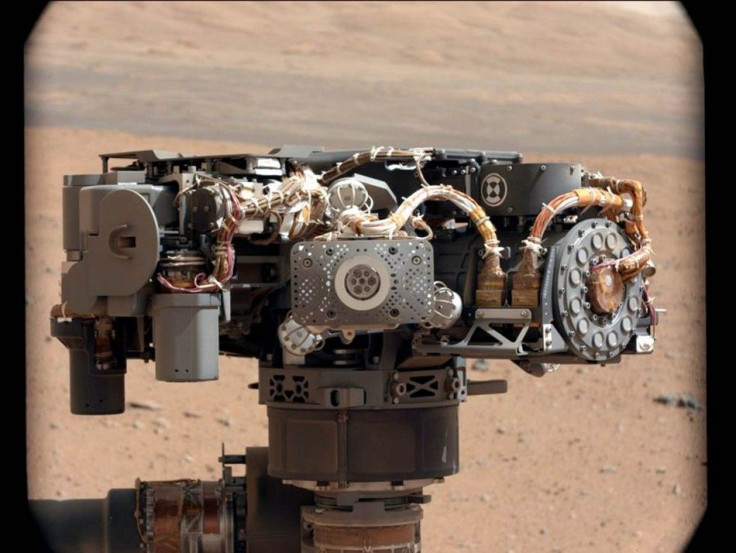Life On Mars: New Evidence Of Alien Life Discovered On The Red Planet Via NASA Photos--Reports

A Geobiologist may have discovered new evidence of alien life on Mars. Scientist' analysis of photos captured by NASA's Curiosity Rover has sparked up the speculation about existence of alien life in the universe. The researchers have discovered sedimentary structures on the surface of Mars that are reportedly similar to those formed by microbial life forms on Earth.
A paper published in the journal Astrobiology by Old Dominion University's Geobiologist Nora Noffke talks about the study of NASA photos of Martian sedimentary structures and has been picked up by Daily Mail. Reporting about the scientists' study, the daily news publication states that this is the "latest piece of evidence that suggests life was once on Mars, although it is not direct proof of its existence."
According to the report, the structures were seen in the photos by NASA's rover of 3.7 billion years old Gillespie Lake outcrop located in Yellowknife Bay area of Gale Crater. These photos were taken on Dec. 17, 2012. Noffke spent several weeks analysing the images and compared them to the photos of the sites of sediment surfaces on Earth found in Portsmouth Island, USA, Carbla Point, Australia and Mellum Islant, Germany.
As noted by the publication these morphological structures are microbially-induced sedimentary structures" that can be located in the shallow water and in ancient rocks on the Earth. The scientists have reportedly realised that the sedimentary rocks structures have similarities to the structure on Earth formed by microbial life forms.
With her analysis, Noffke insists that this is not the classic proof of life on Mars, however, her hypotheses explains the process that led to the formation of sedimentary rock structures. It needs further evidence in order to verify the hypothesis.
"All I can say is, here's my hypothesis and here's all the evidence that I have," Noffke wrote in her article. "Although I do think that this evidence is a lot," she added.
She further states that there is a possibility that the sedimentary structure on Mars may not have biological origin. "But if the Martian structures aren't of biological origin, then the similarities in morphology, but also in distribution patterns with regards to microbially-induced sedimentary structures on Earth would be an extraordinary coincidence," she said.
This is not the first time scientists have claimed to find possible evidence that backs the hypotheses suggesting the existence of life on mars. Earlier n December, NASA's Curiosity Rover has detected presence of methane gas on the red planet. This led to the speculation that the gas might be originating from some form of life on Mars.
Discovery News notes that Noffke's study has been appreciated by Chris McKay, who happens to be a planetary scientist at NASA's Ames Research Centre and an associate editor of Astrobiology. "Noffke's paper is the most carefully done analysis of the sort that I've seen, which is why it's the first of its kind published in Astrobiology," said Chris McKay in praise of Noffke's study that shows possible sign of ancient alien life on Mars in NASA rover photos.
For questions/comments regarding the article, you may e-mail the writer at j.kaur@IBTimes.com.au.




















